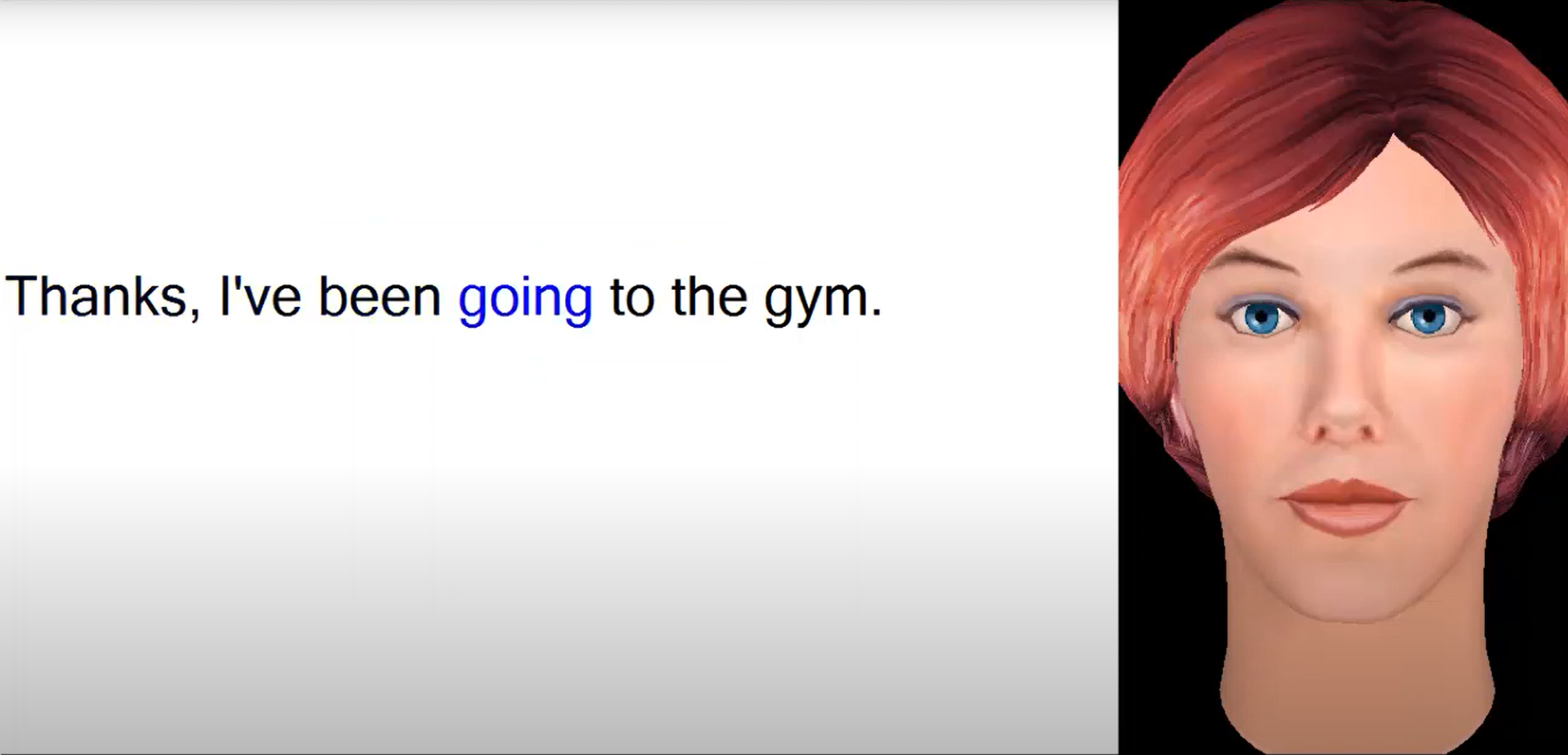Body
Article summary:
- First-of-its-kind research from the Center for Aphasia Research & Treatment at Shirley AbilityLab explores how the use of wearable technology to measure communication can provide a more accurate picture of “talk time” in people with aphasia.
- Findings reveal people with aphasia talk less than one minute per hour.
- Study is published in the American Journal of Speech-Language Pathology.
Try to estimate how many minutes you talk each day: conversing on the telephone, with your child in the car on the way to school, or with a friend over coffee.

Body
Now imagine what real-world communication looks like for individuals with aphasia — a condition that can occur suddenly after a stroke or brain injury and impacts a person’s ability to speak, to understand language, and to read and write. People with aphasia may have difficulty expressing their thoughts, ideas and feelings, which can take a toll on their confidence in communicating and their overall quality of life.
A new, first-of-its-kind study from the Center for Aphasia Research & Treatment at Shirley Ryan AbilityLab explores how limited “talk time” truly is among individuals with aphasia. Findings revealed that people with aphasia talk for less than one minute per hour.
The study further explores how the use of wearable technology — specifically wearing a novel laryngeal sensor and a Global Positioning System (GPS) tracker — can provide a more accurate measurement of how often, and where, individuals with aphasia talk throughout the day.
The new research was led by Shirley Ryan AbilityLab’s Laura Kinsey, MS, research speech-language pathologist, and Leora Cherney, PhD, speech-language pathologist and scientific chair of the organization’s Think + Speak Lab and director of the Center for Aphasia Research & Treatment.
Their study, “Measuring Real-World Talk Time and Locations of People with Aphasia Using Wearable Technology,” is published online in the American Journal of Speech-Language Pathology.
Historic Limitations for Measuring Talk Time in People with Aphasia
Body
Measuring real-world communication in individuals with aphasia historically has been complicated. For example, people with aphasia may self-report how much they talk in an hour, or have family members report by proxy, but reporting can be inaccurate.
Additionally, technological barriers have interfered with the accurate collection and quantification of everyday conversations in people with aphasia, such as background noise in audio recordings or challenges operating recording devices.
Despite previous barriers to accurate measurement, understanding the full impact of aphasia on communication continues to be important for speech-language pathologists as they seek to best support their patients’ ability to communicate and participate in real-world settings.
“If you have difficulty communicating, think about how that impacts your overall quality of life and the interactions you have with your loved ones, your friends, and others in your community,” said Dr. Cherney.
Methodology: Using Innovative Technology to Measure Communication in People with Aphasia
Body
Sixteen people with aphasia participated in the study. Participants ranged from 35 to 72 years of age, and participants had experienced a stroke — and the onset of aphasia — in the previous 13 to 142 months.
Participants wore a laryngeal sensor to capture “physiological mechano-acoustic signals wirelessly.” The sensor was placed on the throat — similar to wearing a bandage — to track movements of the larynx associated with speech. The sensor, which was designed by John Rogers, PhD, at Northwestern University, screens out other laryngeal movements, like swallowing and coughing, to provide an accurate measure of talking.
Also, a GPS tracker was issued to track daily locations, so researchers could see where participants were going each day to measure their talking at each stop. Participants wore the sensor and GPS tracker for between 1-3 days for 8-hour periods.
“By pairing the laryngeal sensor with a GPS tracker, we were able to track participants as they moved throughout their day — at home, stopping at the grocery store or a restaurant, or picking up their kids from school — to see how much they were talking, and where, and to gain objective insight into real-world participation,” said Kinsey.
Results: Real-World Implications for People with Aphasia & for Speech-Language Pathologists
Body
The study finds that mean talk time per hour is 56.46 seconds — just under a minute per hour — and participants visit two locations daily, on average. These findings indicate that talk time of individuals with aphasia is indeed limited. Participants report that the wearable technology was both easy to use and comfortable to wear — indicating that the use of wearable devices is an innovative path for measuring communication more precisely in people with aphasia.
The researchers hope to explore how improvements made in speech and language therapy can carry over to improvements in the real world. Next, they would like to track talk time in patients with aphasia after they’ve received a specific treatment called AphasiaScripts®, which was developed at Shirley Ryan AbilityLab.

“We know speech and language therapy improves a person’s ability to express themselves in therapy sessions,” said Dr. Cherney. “We hope our future research can look at speech-language pathologists’ impact on improving overall communication and quality of life outside the therapeutic setting.”

